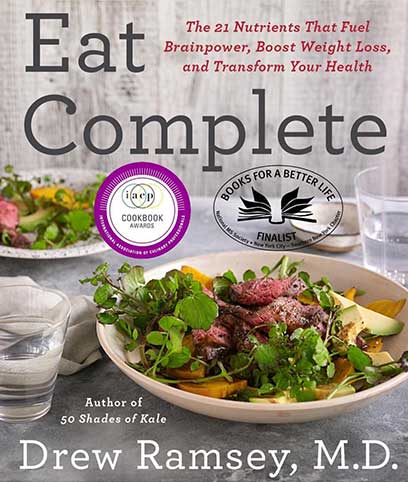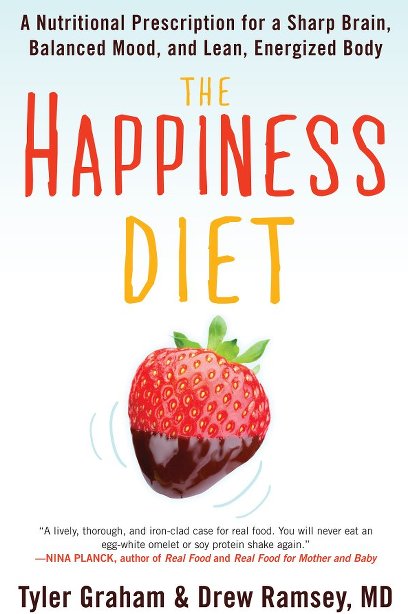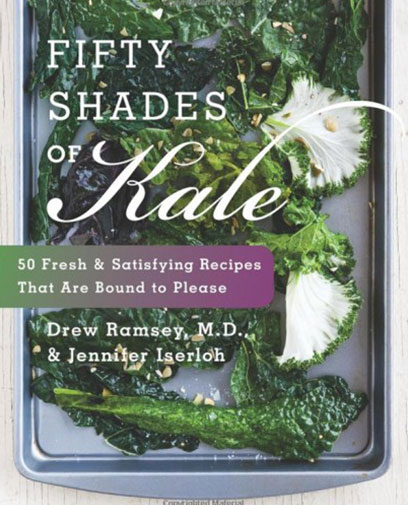Eating healthy, real food costs more, right?
Not so fast. In fact, this is a huge myth. Participants in the SMILES study, a recent study examining the connection between food and mood, saved $140 Australian dollars a month while eating a brain-healthy diet. Still, it is one of the most common questions I get. How can I eat for brain health on a budget? Sure organic blueberries and wild salmon can be expensive…. or not. Here are some ideas for you to grow your brain without shrinking your wallet.
Our Favorite Brain Food on a Budget Hacks:
#1 Seafood – Wild! Small! Frozen!
Fish is the top food category that people are challenged by. Great for brain health and very affordable, but there’s something fishy here. Americans only eat about 14 lbs of seafood per year. While there are many reasons folks don’t eat seafood, I’m here to tell you why cost shouldn’t be one of them.
Sardines and anchovies are some of the most nutrient-dense seafood. At Costco, Sardines are less than $2 per can. At Walmart, anchovies are between $2 and $3 per can. And they are even less expensive if you buy them in bulk. Another trick is buying canned wild salmon – awesome for salmon salad or salmon burgers. At Trader Joes, you can get a 6oz can for just under $3, and a big 14.5 oz can for just over $3. That’s almost a pound of wild salmon! Canned tuna is also a great source of protein, omega 3 fatty acids and B vitamins. Worried about higher mercury levels? Pick Shipjack or American or Canadian Albacore tuna that’s lowest in Mercury and limit tuna to a few times a week. Another top recommendation is the bivalves: mussels, clams, and oysters. Get them fresh or canned (I just made clam chowder at home for the first time – B12 fest!).
Finally, buy frozen fish. Because… almost all fish is frozen when it is caught anyway (I mistakenly thought that fresh fish was straight from the sea!). You’ll find entire sides of wild salmon, pounds of wild shrimp, and many others are waiting for you at places like Whole Foods and other large grocery stores. My Dad loads up at Costco. Frozen is great as it takes away the pressure of having to cook fish right away…. and I like knowing I’ve got a freezer full of brain nutrients in case I am in a pinch.
Remember the rules of fish – go wild, go small, buy frozen.
#2 Legumes
Beans and lentils should be a foundational food category for you. Legumes are incredibly filling, delicious, nutrient dense, and rich in fiber that supports the “good bugs” in our gut. The best value is buying dried beans and lentils in bulk. Add bean soaker to your bio.
Special mention of the lentil – because lentils are life changing in my opinion. Unlike beans, lentils don’t require soaking, and they cook in under 40 minutes and require very little attention. Plus, they are packed with vitamin B9, aka folate. Just rinse before using. There is also tremendous variety within the lentil family – green, yellow, red, black and brown. All boasting different nutrients and flavors. Make into soups, salads, stews or burgers. One of my favorites is my lentil shepherd pie in Eat Complete.
Beans are all delicious and nutritious, and you can eat the entire rainbow with beans alone. At Walmart, 32 oz of great northern beans is just over $3.00. 32 ounces is 26 servings! That’s less than 15 cents per serving! Canned beans may take less time, but the price difference is huge, and once you get the hang of it, cooking beans from scratch doesn’t feel so intimidating.
#3 Frozen Veggies
A lot of people think they should shy away from frozen fruits and veggies, but the truth is that a lot of frozen produce has more nutrients than what we find on our shelves. Frozen produce is harvested and frozen immediately, while most other produce is shipped across the country (or shipped from abroad) and spends days, and even weeks, traveling and sitting on grocery store shelves. Sure, frozen veggies won’t work well in a salad, but they’re great in soups, stews, stir-frys and other meals.
Should they be organic? Sure, organic veggies are more costly. That’s why we recommend eating in season, maxing out the value at your Farmer’s Market, and knowing which veggies are most important to buy organic (like leafy greens). I use The Environmental Working Group’s list of the “dirty dozen” to know which vegetables and fruits are most laden with pesticides and where to focus on organic.
#4 Shop in bulk
Buying in bulk is always less expensive. If you can fit it into your budget, it’s a great way to save and prepare for the month ahead.
Grains like oatmeal and brown rice, which are affordable and brain healthy staples, are easy to buy in bulk. You can also experiment with other whole grains like millet, buckwheat, and amaranth. Legumes like beans and lentils are also often available in bulk bins with even better prices than listed above.
You can also buy spices from bulk bins. The price per ounce may not vary tremendously, but you can buy whatever quantity you like. This will keep your spices fresher, you won’t need to use as much, and you won’t need to toss old tasteless spices.
In some areas, it’s also possible to buy meat in bulk. You can even purchase a meat share directly from a farmer. Depending on how many people you feed each day, it may make sense to go in with a friend or another family nearby. Just make sure you have someplace to store it. A chest freezer works quite nicely. I bought a ¼ cow share of grass-fed beef (we grew the grass on our farm) from my neighbor Farmer Tim. For $790, we got over 200lbs of meat custom cut to our liking.
#5 Eat in season
Eating in season is beneficial for a number of reasons; it ensures diversity in your diet, the nutrient content of freshly picked produce can’t be beat, you get to know folks in your community and the people who grow your food, you support the local economy and often small businesses, and you can save money.
Farmers markets often partner with city agencies to offer incentives to buy. In NYC, many organizations give out “health bucks”, which are $2 coupons that can be used to buy produce at the farmers market. You can also use food stamps at many Farmers’ Markets. In some states, shoppers are also given an extra $3 for every $5 spent using Food Stamps.
And, if these aren’t enough reasons to shop at the market, you can also get great deals, especially at the end of the day. Bags of apples, potatoes, tomatoes, zucchini and other produce can be even more affordable than hand picking your own.
Takeaways? Eating brain healthy food can be intimidating at first, and can feel costly. But there are simple ways to get the most nutrient bang for your buck. With some planning and attention, you can take your food dollars a long way. What are your favorite brain food on a budget hacks? Drop them in the comments below. We’re always looking to hear from you!









